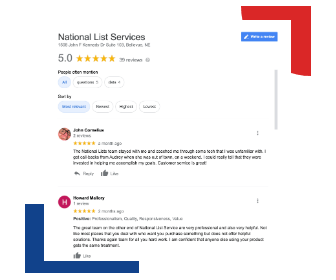The Data You Need to Market To Those Under 25
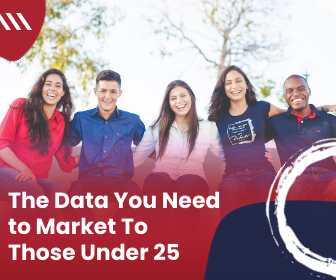
Do you ever read a statistic that just messes with your head? For example, I recently read that by 2022, 41% of the world’s population will be under 25. Which is crazy!! And creates an interesting marketing challenge. How can you effectively market to a generation who has grown up online and is constantly inundated with content and advertising?
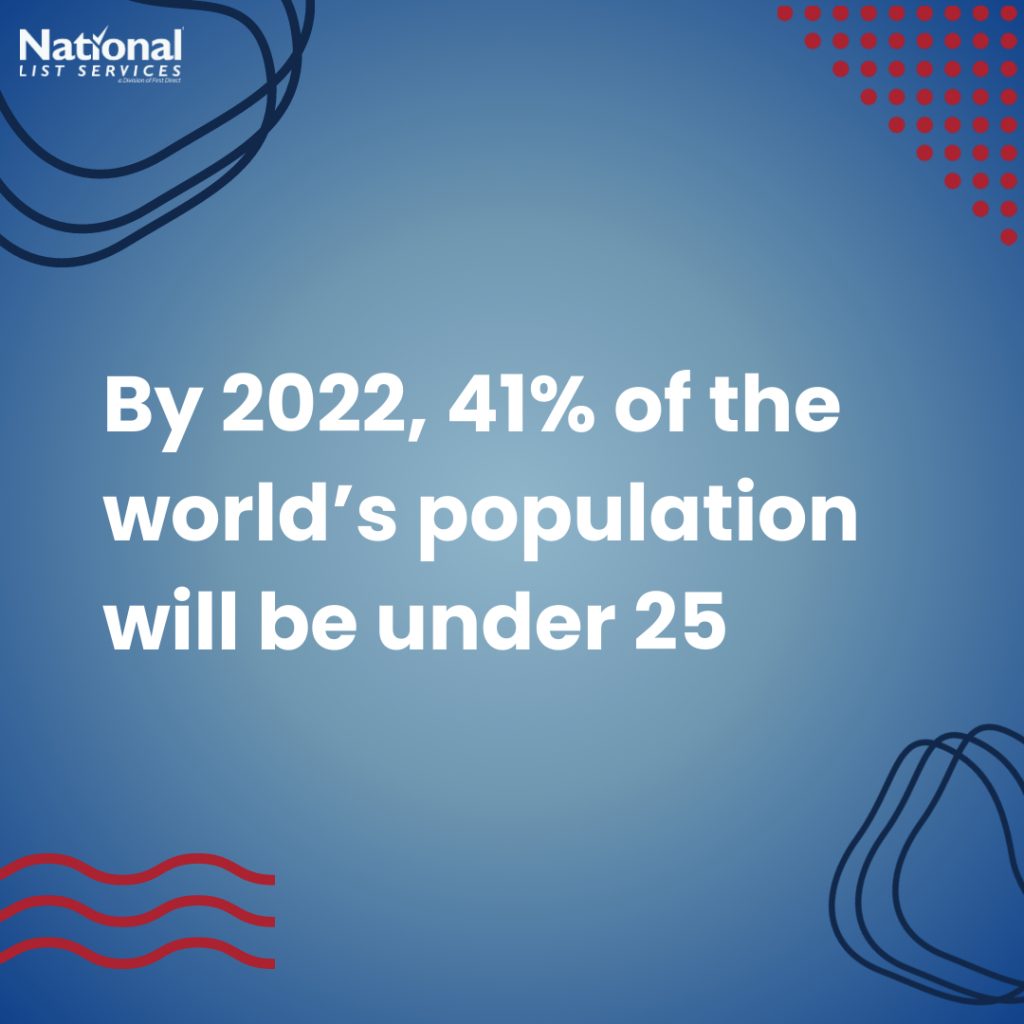
People under 25 not only take up a large share of the world’s population but they also make up a disproportionate amount of online and social media users. However, those of us in this age group statistically have shorter attention spans and tend to make decisive decisions about whether or not to consumer content or ads. A study in 2019 found that 64% of 18-24 tune out content from cluttered environments. Leading to 46% of advertisers saying that they have issues getting their content to stand out! Also, a third of advertisers say that it’s a challenge to find effective ad placement sin all the online clutter. What can you do to cut through all the online noise and reach this massive market?
#1 – Find Shared Passions
The sheer amount of product, companies, and information available is staggering. It is not enough anymore to have a good product available anymore, your brand ideals and personality need to match with the personality of your consumers. 56% of Gen Z consumers say that having shared passions and perspectives is a major factor when it comes to their engagement with a brand. However, Gen Z’ers are fantastic at sniffing out inauthenticity. Your brand personality and ideals need to actually be what you say they are. Actions speak louder than words!
What are the advantages of having a well-defined brand personality and ideals? Giving your company a personality makes things like content creation a lot easier. Knowing who you are also can help you make decisions about the direction you want to go in the future.
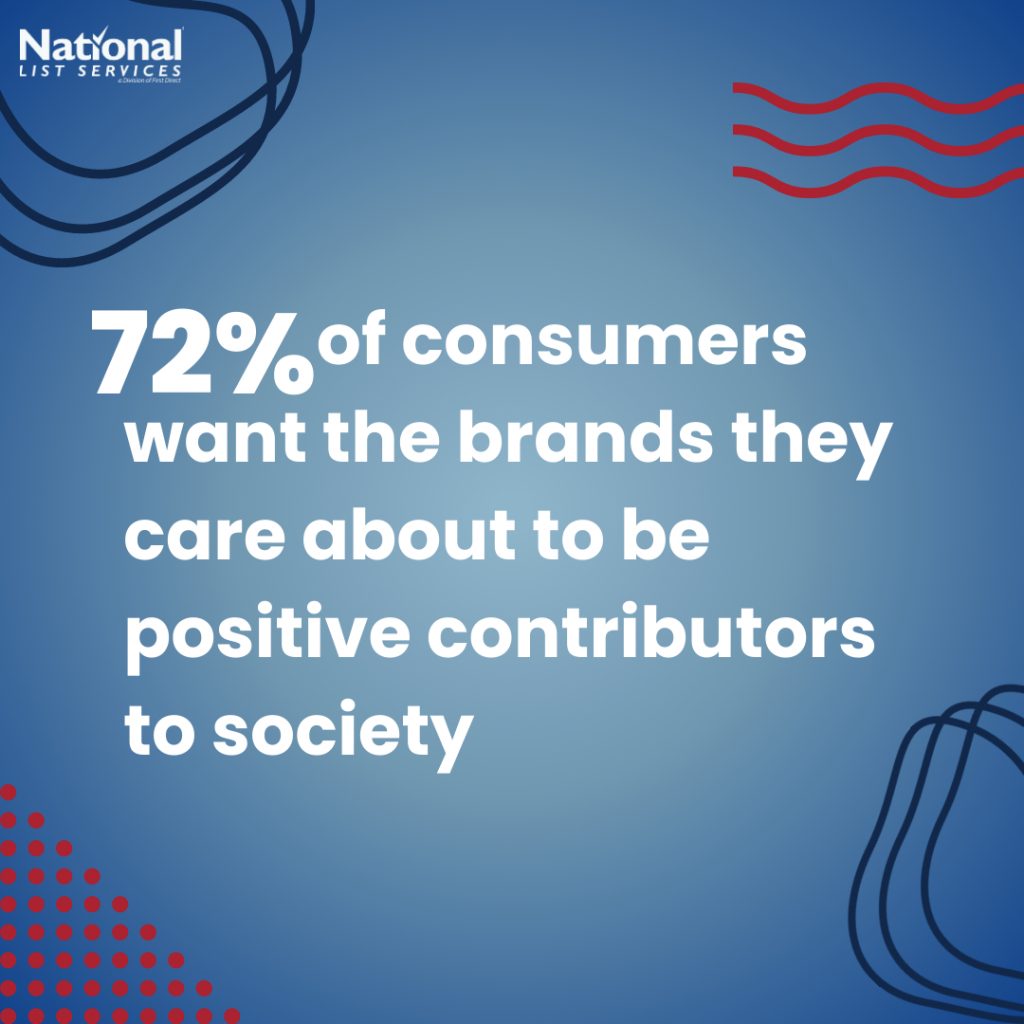
And 49% of young consumers say they will evangelize a brand they feel represents their values, likes, and personality.
Don’t be afraid of incorporating causes you care about into your brands personality! 72% of consumers want the brands they care about to be positive contributors to society. We’ve seen in recent years that many brands (especially smaller companies) connect their core brand to a charity or cause they care about. Younger consumers are 69% more likely to buy from a brand that contributes to a cause.
#2 – Choose Quality Locations
Younger generations are big on authenticity, brand trust, and quality. 74% of 18–24-year-olds believe that brands are responsible for where their ads are shown. Which is true! There’s very little excuse for having your ad show up on a website that doesn’t believe in the same things as you. Programmatic advertising and digital display ads give you a lot of control over your ad placement. Nearly 40% of advertisers have faced some backlash for having ads appear near low quality content. 54% of younger consumers say that ads placed near premium content inspires more trust in the ad itself!
#3 – Use Innovative Technology
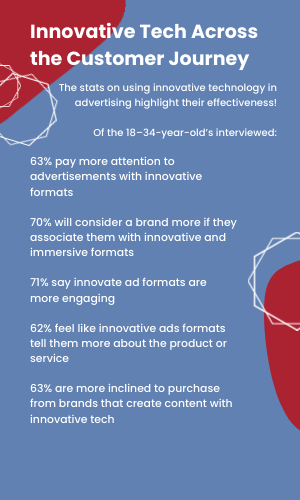
From AI and AR driven content to native and contextual ads, technologically advanced are advertisements are becoming more accessible. The stats on their effectiveness across the entire marketing journey speak for themselves!
Of the 18–34-year-old’s interviewed:
63% pay more attention to advertisements with innovative formats
70% will consider a brand more if they associate them with innovative and immersive formats
71% say innovate ad formats are more engaging
62% feel like innovative ads formats tell them more about the product or service
63% are more inclined to purchase from brands that create content with innovative tech
#4 – Personalization
Personalized ads are effective for every age group. Gen Z’ers and Millennials are less tolerant of ads that aren’t personalized. Most younger consumers have in innate understanding of how their personal data is used to create targeted ads. Being targeted (or retargeted) based on their interests and past activities are expected. Thankfully creating effective personalized ads are easier than ever to make.
- What can you do to create effective personalized ads? Start with the information you have about your customers. It’s difficult to know what your customers want if you don’t know who they are. Look at your 1st party data. What are your most common demographics? What are their interests? How would they most like to be communicated with?
- Use the tools available. Marketing automation platforms and CRMs can do a lot of the heavy lifting when it comes to segmenting data. Many of them are designed to help create simple, personalized messages.
- Have a well thought out plan. Do you have a mapped-out customer journey? Knowing where in their journey your customers are makes a big difference in the types of personalization that will work for them. Think about nurturing. Pay attention to the details. Make sure that there aren’t little annoying things such as, getting an abandoned cart email even though you’ve already come back to purchase it. Get rid of triggers that are connected to repurchasing products commonly only purchased once.
- Know when to walk away. Keep your data clean. If someone has never opened an email it might be a good idea to take them off your list. Their data could skew your demographics and could make understanding what personalization your active customers need difficult.
Is it effective?
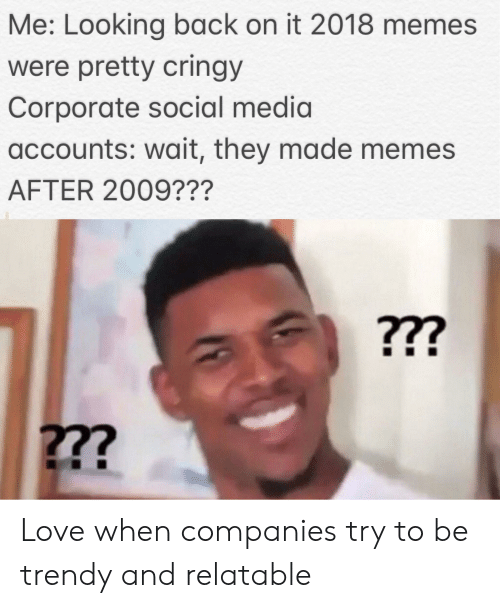
Is it effective? Yes! From that survey of consumer between the ages of 18-34, 58% said that a personalized ad helped them make a purchase decision. 42% also said that they had clicked on a sponsored ad in the last 6 months!
In my experience, a lot of companies panic when thinking about marketing to young consumers. They feel like they need to be relatable or “cool.” That often comes off as disingenuous and is easy to see right through. It’s far more effective to instead focus on building a relationship with them. Make it easier for them to see who you are and what you stand for. Chances are they care about the same things you do!
Why do you need online reviews?
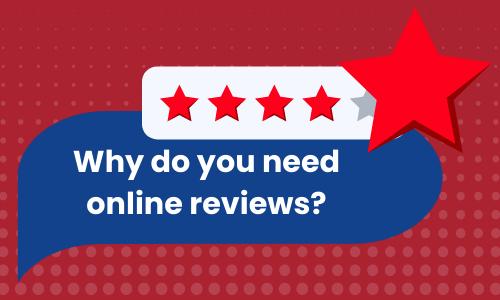
Online reviews are a staple of our lives now. Why should you care about the reviews that your company or products are getting online? Here’s what we have found!
The Social Proof Phenomenon
What do online reviews have to do with “social proof?” “Social Proof” is the phenomenon based on the fact that it’s easier to buy things or trust companies if we know that other people already have. Our peers provide the proof of somethings value.
“Social proof” is part of the transparency that builds brand trust. Most consumers (almost 88%) research a business before buying from them. A lot of that research comes from reviews and reading what other people have said about their experiences.
What else can Reviews Do for you?
Reviews can help educate consumers on your products and services. Reviewers usually talk about their specific experiences in their reviews. It can be an easier way for potential customers to learn more about what you offer.
Reviews Boost SEO. Specifically, Google Reviews. Google indexes reviews connected to your listing to help filter results. Especially for local traffic. “Best __ Near Me” is decided by reviews and stars. Customers will often use your keywords in reviews without even realizing it. This helps Google learn about you.
What can you do to collect reviews?
People are inclined to leave reviews if they a specifically positive or negative experience. Therefore, work hard to provide an overwhelmingly positive expertise for your customers! (You should be doing this anyway; the review is just a byproduct. 😉 )
People like to do things for other people so a great way to collect reviews is to just ask for them! A follow up survey email after they buy from you is an easy way to this. Ask them specific, easy to answer questions about things such as: service response times, shipping times, product or service quality etc.
Make it easy to review you. No one has time to take 10 minuets following a complicated review survey with long required written answers. People are doing you a favor by reviewing you, show that you apricate it by being respectful of their time and effort. Take out pain points of the review process: go through and make sure there aren’t any unnecessary steps or questions. Double check the user interface, id it easy to figure out?
Incentivizing your reviews (specifically ecommerce) is a big no-no! As temping as it is to show your appreciation for the review with a coupon or free shipping, or something: don’t. Both Google and Yelp have policies in place banning incentivized reviews. They will take the reviews down and give you a slap on the wrist.
What to do with reviews once you have them
You have the reviews – now what? Here’s 2 ways to leverage them!
- Show them off
Let your reviews sell your product for you. Happy previous customers can be a great way to convince your potentials to buy from you! Show off your reviews on your home page with Google review widget or prominently feature some reviews as part of the design. Don’t forget to ask for permission first if you are going to highlight a specific review, especially if you are going to use their picture. - Engage with reviewers
let them know you appreciate them! It doesn’t have to be a big deal, simply liking the review or just saying thanks goes a long way. That little bit of effort can turn a happy customer into a loyal one. And a lot of marketing automation software makes replying to reviews across multiple platforms easy.
Do you have a favorite customer review?
While we are on the subject… leave us a review! 😜
All The Things You Need To Boost SEO

SEO has proven over and over again that it is essential to growing (and maintaining) your business. However, it doesn’t often get the spotlight it deserves! So, here’s some things you need to know to boost SEO.
What is SEO?
SEO stands for search engine optimization. Search engines look at look at many site elements like structure and design, visitor behavior, content, and other external factors to decide how highly ranked your site should be in the results pages. SEO has become the catch all term for all things you can do to make your site look more appealing to search engines.
What are the advantages of good SEO?
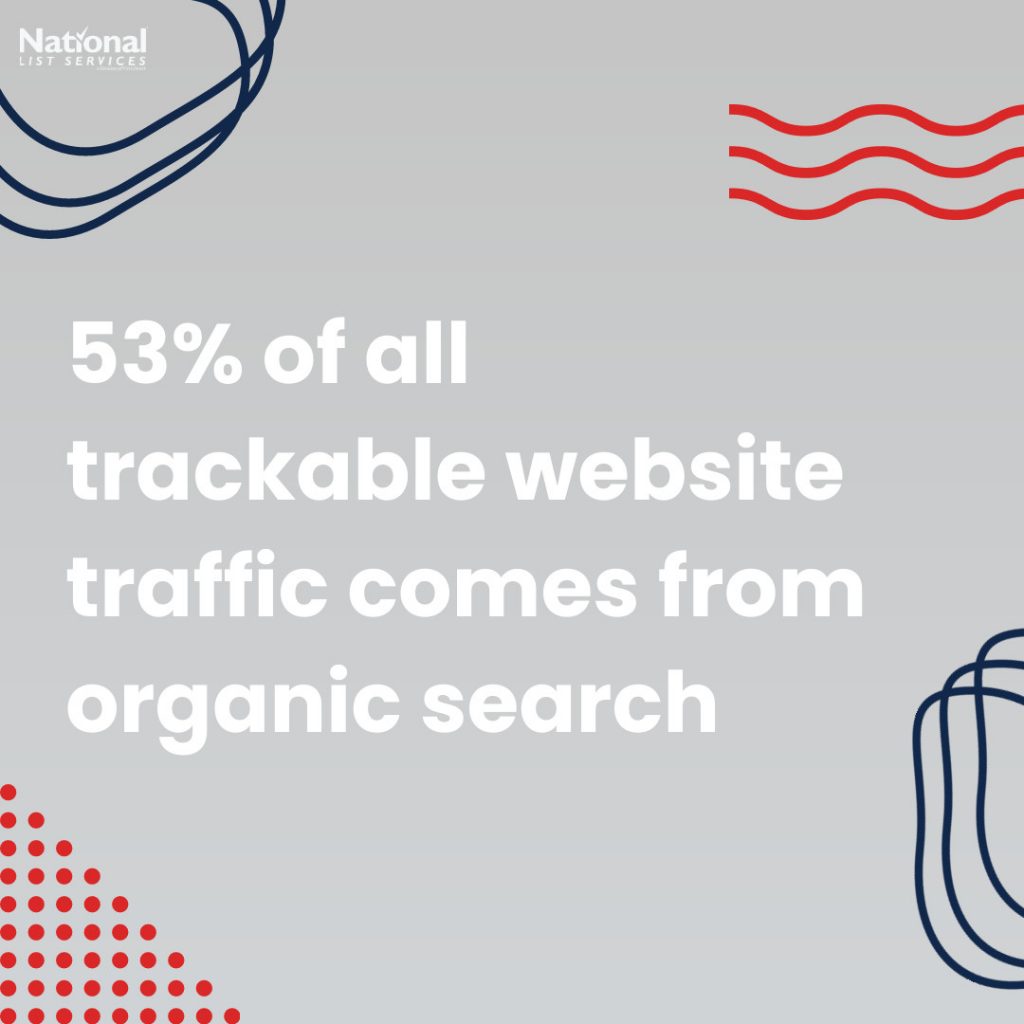
Good SEO gives your website credibility. It makes it easier for people to find your website when they search for it. And it helps create a smoother user experience.
The other important reason for making sure your websites SEO is up to snuff is that it helps generate organic traffic. 53% of all trackable website traffic comes from organic search. SEO is the main thing influencing how easy it is to find you online organically. Which is probably why it’s estimated that agencies and brands spent over $79.27 Billion on SEO services last year.
SEO is also important in driving local searches. When you search for “Best Pizza Place” near me, the results you are shown are based on the pizza place’s SEO keywords.
Where do you need to pay attention to SEO?
Everything “online” can be indexed and therefore optimized. Google indexes websites and apps that they own. So, your YouTube video search optimization is connected and combined with your website optimization. However, some companies, like Facebook, categorize videos and posts internally, meaning that it doesn’t help general search engine SEO.
What can you do to boost SEO?
Personally, I would split SEO into 2 main categories: Content and Categorization. Both are super important but require different things.
Content
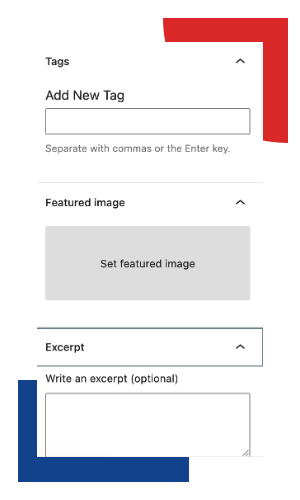
Content is all the things you put out there. Search engines look at what you are putting out there to determine your search rankings. Google likes blog articles and web pages with a lot of content. Adding pictures, videos, links, and charts shows search engines that what you are creating should be seen. They are going to rank something high in the search results if they don’t think its valuable.
To go along with that, search engines look at user experience. Is your website/blog easy to read? Do you have paragraphs, subheadings, punctuation, and spacing? Is it super short? (Long form content, over 2,000 words, tends to rank higher.) Do your pictures and video take a long time to load? How about accessibly? Do you have alt text for your images and text readers?
Search engines want to provide the best possible experience for its user and will rank your website accordingly.
Categorization
Categorization is all the “backend” stuff. Keywords, hashtags, blog categories, utm links, exerpts, and featured images all fall into this bucket. The best way to boost this type of SEO is literally just fill in every box provided. If the video you are uploading to YouTube as a field for title, description, keywords, hashtags, ect: give them that information! Search engines need to know what they are ranking, and all the backend information is how they know what it is and where it should go.
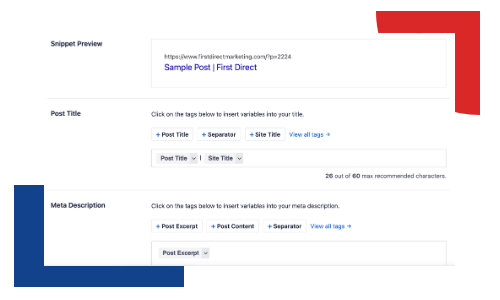
If you write an article called “How to make good pizza” the search engine will put with other information on pizza. However, if your article also has keywords like, “good pizza,” “how to,” “cooking,” “dinner for two,” “Italian food,” and so on, the search engine has a lot more places it can show the article.
Another thing you can do to boost SEO is to repurpose content. Search engines like to see a lot of content that revolves around a single topic. It shows a consistent brand message and purpose. A consistent brand message can indicate brand value.
What ways have you found to be effective in boosting SEO? Do you have a favorite method?
All The Reasons You Need A Buyer Persona
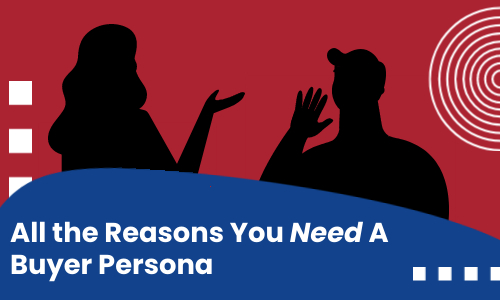
A Buyer Persona or Avatars is one of those confusing marketing things that seems to be really important, but no one ever explains why or how you can make one. Buyer Personas are especially valuable in this digital age where you can’t see your customers. They can help make your digital presence and marketing more personal.
It’s a lot easier to market to one single person than to a crowd. We’ve talked in the past about social media (and email) feels like a personal one-on-one conversation between brand and consumer. Building a buyer persona connects with that thinking. Having a buyer persona helps you to hon in on who you are reaching and who you want to reach.
What are Buyer Personas or Avatars?
In the simplest terms, a buyer persona is exemplification of all of your customers. The most common way to do this is to create a fictional person that has the most common demographics and interests of your customers. What are your customers common denominators? What do they want? What are their pain points? Taking this information and combining it into a person you can picture makes it easier to connect with the crowd. A lot of marketers recommend giving your buyer personas names.
Jim Edwards from Funnel Scripts explains buyer personas as the main character in the story of your company’s customer journey. Although your company already has its own personality, (or brand) in order to success the narrative you’re telling haws to focus on what the customer wants and needs. You are there to help them get to where they want to go. Jim Edwards example buyer persona was for a weight loss company. Their buyer persona is a middle-aged unicorn named Fred who needs to lose weight if he wants to be successful at his quests. Fred is the main character in the story. The weight-loss company is there to help him.
What information do you need to create a buyer persona?
Like any good main character, your buyer persona needs to be well rounded. It needs to have a purpose, interests, goals, and struggles. It’s especially important to know what motivates them so you can help them.
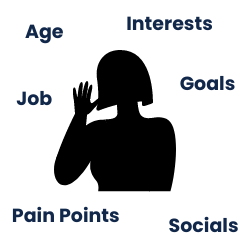
Here’s some common buyer persona attributes.
- What are their basic demographics?
What gender to they identify as? How old are they? Where do they live? What is their relationship status? Are they educated? - What do they do for work?
What’s their job title and description? But more than that, are they a decision maker? What do they influence at work? - What are their interests?
Do they have hobbies or interests? What do they do in their free time? Are they part of a community? - What do they want and why can’t they have?
This a big thing for figuring out what you can do to help them! What are their goals and dreams? What are their pain points? Like, what keeps them up at night? - Why wouldn’t they buy from you?
What’s stopping them from buying from you? What objections may they have? - What ways would they prefer to interact with you?
Do they use social media? Do like a particular social media? Is a phone call the best way to reach them?
Once you have that all that information, you will have a very clear image of who your customer is!
A lot of companies create multiple buyer personas. It is a very good way to segment out different sections of your business. It is also helpful to create a buyer persona for your ideal customer as well! You can take the information you’ve learned about your ideal customer and use it to go and get those customers.
Do you have a buyer persona for your business? And more importantly: what did you name them? 😜
Be Your Own Brand Spokesperson – Why?
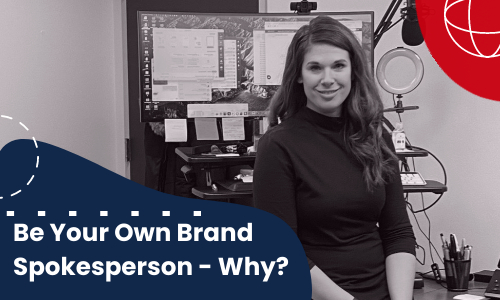
While branding your company most people focus on things like logos, colors, message. Which is all super important! However, in this visual digital world we are living, putting a face to the name (or brand, in this case) is very valuable. For example, pictures with faces in them are on average 38% more likely to get likes and 32% more likely to receive comments.
Here’s some specific reasons to use your face in branding and ways to do so!
Why Showing Your Face Helps Your Business
Here are 4 reasons!

- Using your face helps brand recognition
There’s a reason why brands use spokespeople. It is often easier for people to remember other people than it is to remember brands or companies. - It humanizes your brand
People like to work with people, not “soulless corporations.” Connecting your face to your company makes it easier for customers to relate to you and build an emotional connection. This is one reason why it’s helpful to use your face. Chances are that you and your company share the same values and goals. Having that message come from you and the company reinforces those ideals and helps other care about them too!
Another aspect of humanizing your brand is the trust that comes with it. It’s much easier to trust a person than a company; you know who they are and what they stand for. Linking you to your brand pulls that trust over.
- It creates engagement
Knowing who they are engaging with makes it easier for customer to connect with you on social media. Also, our brains are literally wired to find faces so putting your face front and center will help draw people to your content.
- It helps shape your community
This may sound confusing but linking your face and your brand can help create a more accurate and diverse business community. We all play a part in shaping the communities we are a part of. All of us have a story or journey to share. Highlighting your story along with your company story creates diversity. And you never know who your story will touch!
How to put your face front and center
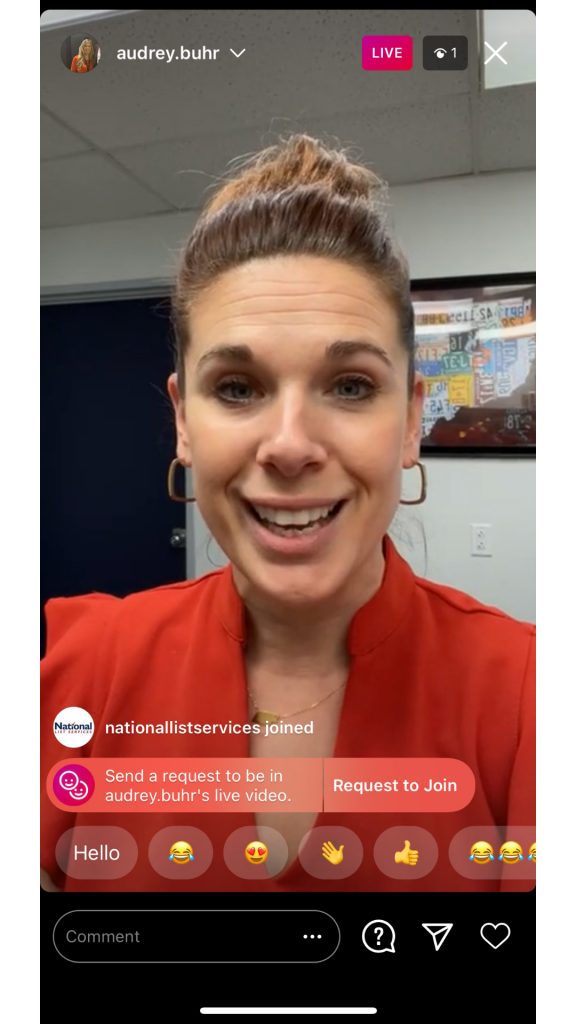
Here’s some tips to get started
Show behind the scenes
Pull back the curtain on your day to day. Everyone loves behind the scenes. Showing what you are doing is a good way to ease into using your face for marketing. It’s can be simple to do, just bring your audience along to your tasks! It’s a good way for people to get to know you and all the things you. It also can help your customers appreciate all you do!
Use stories!
Stories is a great place to show all those behind-the-scenes shots. It’s also a great place to speak to the camera about your company and your mission. Stories get a lot of engagement but disappear after 24 hours so there’s a lot less pressure! To make it easier on yourself, prerecord your videos. Make “eye contact” with the camera, don’t look at your own face. Have a general idea of what you want to say, a bullet point list helps! And don’t worry about any word whiskers. The point of this is to help people get to know you and show authenticity. It doesn’t have to be perfect!
Go Live!
You might be surprised by how much more engagement live videos get! Unlike prerecorded videos, live streams make viewers feel like they are a part of the conversation. The more authentic interactions create more engagement. For example, on average, live content generates 10x more the comments that prerecorded videos. And people tend to watch live content 10-20x longer.
We want to see your face! How do you connect your personal brand to your company brand?
What You Need To Know About SaaS

SaaS stands for software as a service and is sometimes known as “cloud-based software.” In the past few years, the Saas industry has exploded and has become the default type of software for most business technology. SaaS is differentiated from other cloud-based technology because it’s focus in entirely on products for business.
What’s the advantage of using SaaS?
What’s the advantage of using SaaS? There are many! For one thing, since Saas is entirely web based there’s no set up or installation and the software is maintained by the vendors. This allows business owners to focus on using the tools instead of learning complicated systems or maintaining hardware.
Another advantage is that most SaaS systems are paid for with a subscription. This eliminates setup expenses and cuts down on long term costs. SaaS user interfaces are usually highly customizable making an easy user experience. These two things making SaaS ideal for small business because it allows them to have powerful, potentially expensive software that could have otherwise been unattainable.
The SaaS Business Plan
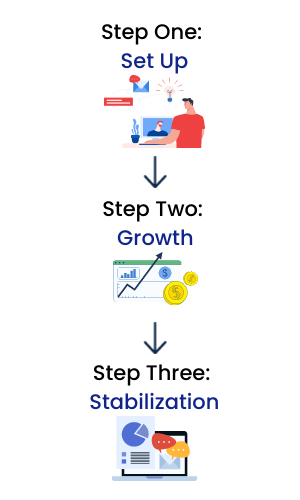
The SaaS business model is split into three parts. Part one is “Setup.” The setup phase is where is where you create the foundation for your business. Either by starting completely form scratch or integrating business data.
Step two is “Growth.” (which says a lot about the effectiveness of SaaS systems.) Once you have new customers, you’ll also have increased data about your customer base, and you can use that information to generate more customers. More customers also means more revenue that you can reinvest into your business.
Step three is “Stabilization.” In this phase you’ve created enough infrastructure that the systems you have in place can keep up with customer increases and you can refocus to other aspects of your business.
What are some examples of SaaS services?
Theres countless SaaS companies but some of the big SaaS companies include Google, HubSpot, MailChimp, Slack, SurveyMonkey, and Spotify. Adobe and Microsoft also have SaaS services available.
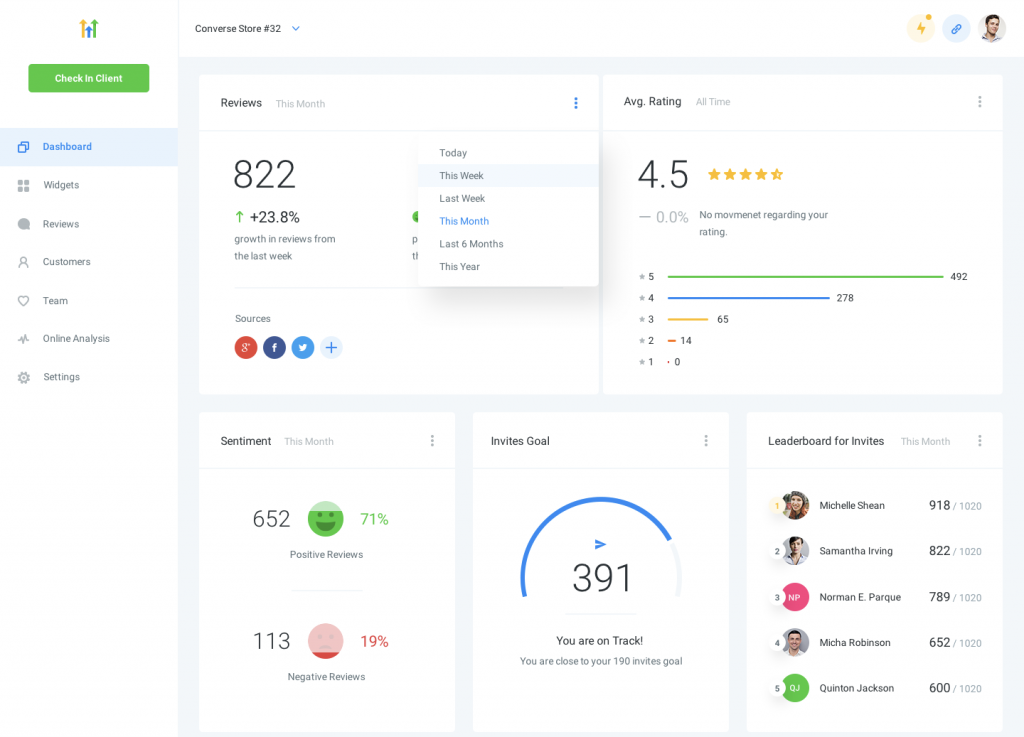
Here’s some SaaS companies we use every day:
- Twilio
- High Level
- LastPass
- Click Funnels.
What do you think the essential SaaS companies are?
Learn More about SaaS and business growth from High Level founder, Shaun Clark here.
How Can You Increase Sales Volume?
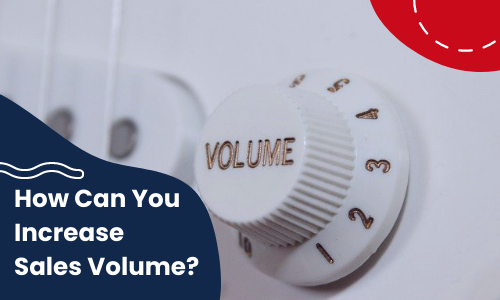
We all love talking about the big sale accomplishments, the brag worthy sales. But the day-to-day is often defined, not by the amount of a sale, but by the quantity of them. How can you increase sales volume?
Technically, sales volume is the percent of units sold within a period of time. Companies use sales volume to see what products are selling successfully.
What are some ways to increase sales volume?
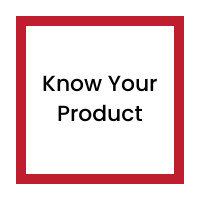
- Know your product. Do you know all the things that make your product superior to your competition? Why should a customer choose your product? What’s your elevator pitch?
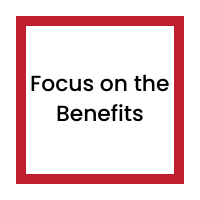
- Focus on the benefits? All buyers have only one question: Does this solve my problem? They want to know that what they are receiving will benefit them and be worth the exchange of time and money.
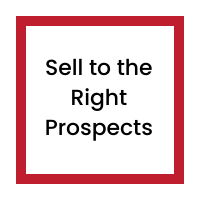
- Sell to the right prospects. If your sales volume seems to be decreasing it may be a good time to reevaluate your target audience. It is also a good idea to get an updated a list.
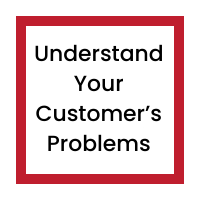
- Understand your customer’s problems. What problems are your target customers trying to solve?
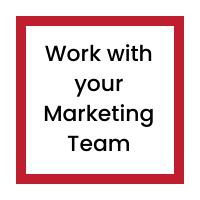
- Work with your marketing team. Your marketing team will be able to create content and structures to support your sales volume.

- Remember, time is money. Increasing your sales velocity or the amount of time it takes a prospect to move through your pipeline will positively impact your sales volume.
What ways have you found successful in increasing your sales volume?
How Your Flow State Can Help Productivity

When was the last time you felt fully engaged in a task and the hours just melted away? That’s called your flow state, something that psychology researcher Mihaly Csikszentmihalyi, from Claremont Graduate University in California, identified. Here’s how your flow state can help your productivity!
Flow is simply that state of mind in which we feel and perform our best and feel at ease. We don’t have to wait for a flow state to happen — we can take steps that can allow us to access it.
Here are the 2 steps needed to tap into your flow state.
- First, you must observe yourself. For the next two weeks, observe yourself, notice what you’re doing, and look for the clues of flow: losing your sense of time or self, feeling that you’re acting with ease, gaining new insights, and having a positive feedback loop.
- Then, when you are in a state of flow, broaden your awareness: Notice and remember the activities surrounding you. Recognize what you’re physically doing and think about what you’re doing mentally.
Tell us your tips and tricks for staying productive!
3 Types of Alternative Black Friday Campaigns
Calling Black Friday the biggest shopping event of the year is an understatement. In 2019, consumers spent $7.4 Billion online alone. This year more than ever, online spending is expected to grow. What are some ways to stand out online this holiday season?
Instead of the usual ‘one-day-only % off’ sale, campaigns focused on other things can be a great way to set you brand apart, gain awareness, and increase conversions. Here are three examples.
#1 – the Anti-Black Friday.
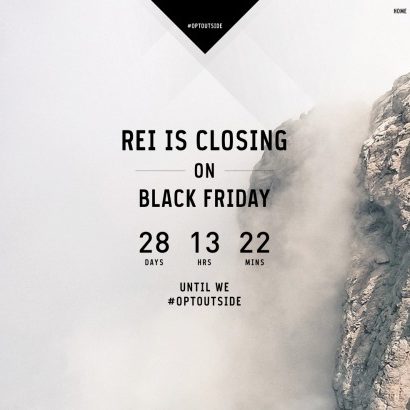
Taking a page from REI’s #OptOutside campaign, focusing on not buying anything on Black Friday can be very effective. Since 2015 REI closes on Black Friday and uses #OptOutside to encourage people to spend the day outside, which goes along perfectly with their brand mission and has helped grow their online community. Due to the longevity of the campaign and community it has created, the Opt Outside campaign helps increase REI sales year-round.
Another company using the Anti-Black Friday approach is the skincare company Deciem. In 2019, closed their stores and blacked out their website to protest the hyper consumerism focused Black Friday. Instead, their holiday campaign focused on “shopping slow.” For the entire month of November, every product was on sale. The longer, inclusive sale increased sales and helped reinforce their brand ideals with their customers.
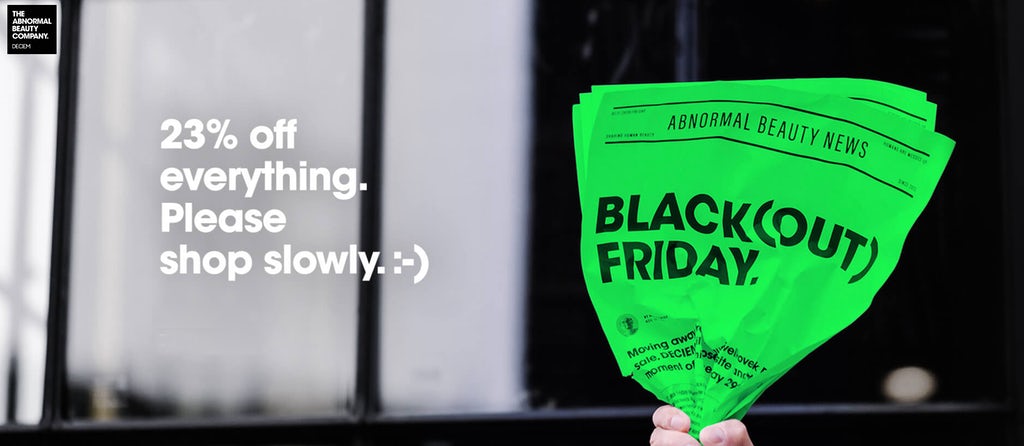
#2 Highlight Your Mission
Many companies use Black Friday as an opportunity to show their customers what their brand ideals are. Donating to charities is a popular way. For example, Patagonia is known for alternative Black Friday campaigns but one especially effective one was 2016. They pledged to donate all their Black Friday sales to grassroot organizations that aligned with their brand goals. The campaign ended up generating $10 million in sales, over 5xs their goal!

The fashion company Kotn did something similar. Instead of sales, they promoted that they were going to donate Black Friday weekend profits to a charity that builds schools in Egypt, where the cotton used in their products is grown.
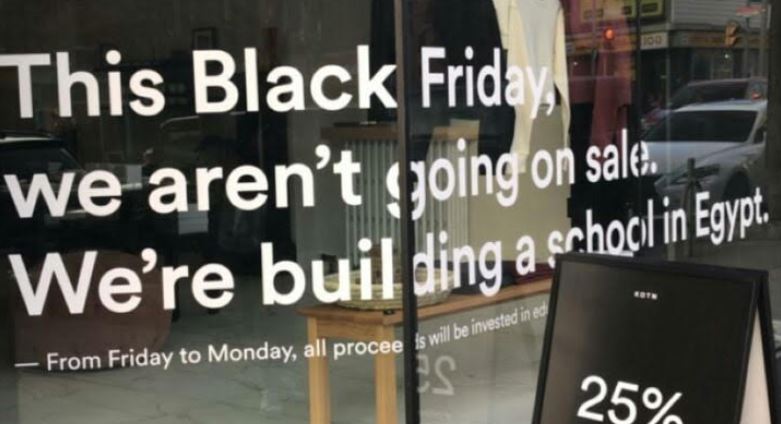
#3 Make it an event
A great example of this is MeUndies’ 2016 campaign. They promoted a Facebook live event for Black Friday. As more people joined, they unlocked more discounts and promotions. The event ended up with over 13,000 viewers and had a conversion rate of over 25%, which is 13x more than their average!
All of these brands used a day usually clogged with advertising to redirect their customer’s focus. They reminded people of their band mission and goals and helped strength their connection to their customers. What fun ways have you seen company handle Black Friday?
How To: Be A Team Player

Today the people in our work teams might be spread out across the country – or the world. It is easy to take it for granted that because of technology, we are able to work together and solve problems no matter where we are physically. The need for good teamwork will always be a necessity. What can you do to be good team player and help your team run smoother?
- Be humble. Unsurprisingly, being a good team player means not focusing on yourself or thinking that your ideas are the best. On the flip side, not having confidence in your ideas is also a violation of humility. As the saying goes: “Humility isn’t thinking less of ourselves; it’s thinking about ourselves less.”
- Be hungry. Be willing to hustle. People who have a strong work ethic are often successful on teams because they don’t do the bare minimum. They want to do more than expected. When everyone on a team works hard, things go smoother.
- Be smart. Have common sense. Think before you speak. Think about what effects your actions will have on the project and on your team members.
It’s important to be able to identify what gaps your team has. And to look at yourself and see what you can to do make things run smoother.
What have you found to help your team run smoother?

